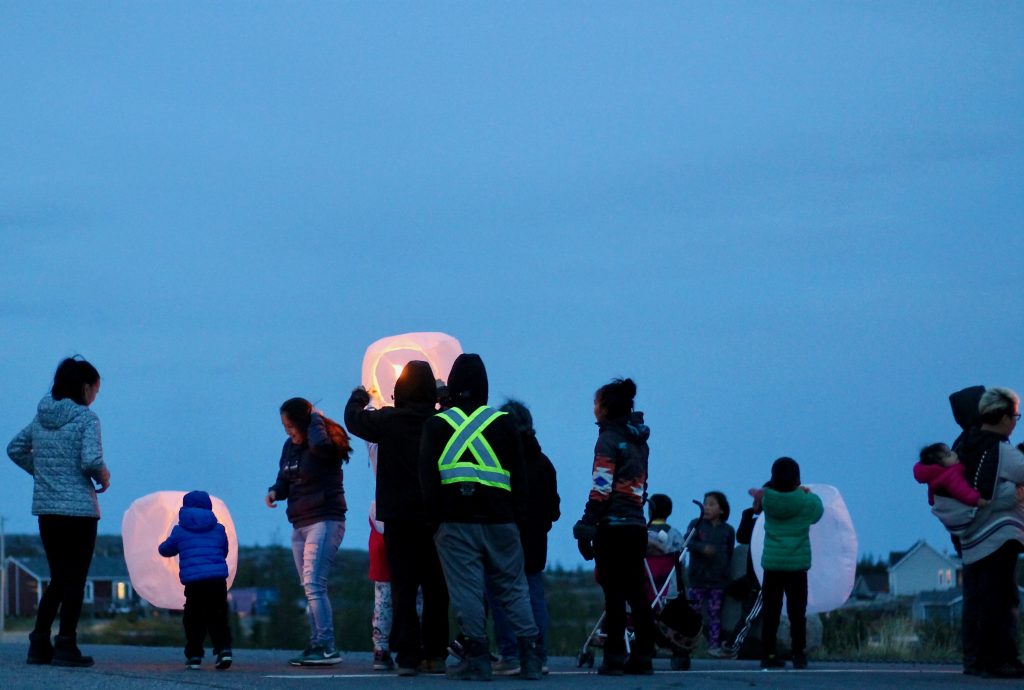Nunavik prepares to launch its suicide prevention strategy
The region has a five-pronged strategy to address a recent increase in suicides.

Earlier this month, representatives from organizations across Nunavik gathered in Kuujjuaq to try to address the high rate of suicide in the region.
“What gave me a lot of encouragement was that these participants were very eager to start something, they were very ready to start something concrete in their own organization or department or role,” said Annie Nulukie, the suicide crisis intervention team coordinator for the Nunavik Regional Board of Health and Social Services.
Led by the health board, this work includes the school board, the housing board, Kativik Regional Government and Makivik Corp., among 15 organizations in total.
There are five priorities outlined in the Nunavik suicide prevention strategy, which all of these groups are now working on putting into action.
They are the following: seeing the healthy development of children and youth, a comprehensive mental health support system, healing from historical trauma and grief, the use of Inuit knowledge, and Inuit-led solutions that bring all of Nunavik together.
“The action plan is going to be a response to the strategy,” said Nulukie.
Some new actions identified during the workshop include developing a program through the school board to train and certify Inuit caseworkers in suicide prevention, said Nulukie. They’re also developing a crisis intervention protocol to guide frontline workers, creating sexual abuse intervention teams and hosting healing sessions in communities across Nunavik.
Other measures are more aspirational.
“We find it hard to reach out and appeal to youth, so we can’t have a concrete measure for youth right now,” said Nulukie. “Instead of not including that important component, we decided to start from scratch and determine how to reach out and work with youth.”
There is no specific intervention team planned yet for youth, she said, but there is a plan to take a step back and look at how they can better appeal to the younger generation.
The development of a suicide prevention strategy for Nunavik began in August 2018. This followed the Inuit Tapiriit Kanatami’s focus on managing the high rate of suicide among Inuit.
The rate of suicides has increased in Nunavik since 2013. From 2017, the rate was 154.3 per 100,000 people, above the rates in both Nunavut and the Inuvialuit Region. In Nunatsiavut, the rate is 200 per 100,000, though it did decline from 2013 to 2017.
Across Canada, the average suicide rate is 11.3 per 100,000.
For Nunavik, a big part of the equation is recognizing the historical traumas that have contributed to the high suicide rate, said Nulukie.
Nunavik’s suicide prevention strategy states: “Historically, Inuit did not have elevated rates of suicide. Suicide rates among Inuit first increased in the 1970s, among the first generation of young people to grow up in settlements, similar to the experience in other Inuit regions.”
This first action plan workshop for the strategy, held from Oct. 30 to Nov. 1, looked at what can be done over the next few years, while a second workshop in 2020 will look beyond that at what could be introduced in three to five years.
It’s critical to be realistic, Nulukie said of the strategy, and have realistic timelines for their action plan.
There is already funding in place for this work through the health board, said Josée Lévesque, a board communications representative. Should that funding come up short down the road, she said, having a plan in place, with objectives and measures clearly set out, will make getting additional funding that much easier.
Right now, those who attended the workshop are looking at their own organizations and whether the priorities of the suicide prevention strategy are met within them.
Nulukie said they are also recognizing what is already being done in terms of suicide prevention, including programs through the health and housing boards and other groups, such as on-the-land camps and training for frontline workers.
With so many organizations around the table, Nulukie said it was important that everyone was ready to get to work.
The overwhelming response from all parties was that they’d spent enough time dwelling on challenges — they wanted to talk solutions.
“What’s also an exciting part for me too is we’re starting to finally have connections between different organizations and different departments,” said Nulukie. “That’s a big part. When we’re working in isolation, we’re less effective. The more we work in unity, the stronger we are.”
If you are in distress and need help, you can reach the following resources:
• Kamatsiaqtut Help Line: 1-800-265-3333
• Crisis line for former residential school students: 1-866-925-4419
• Kids Help Line: 1-800-668-6868 or text 686 868
• Hope for Wellness Help Line: 1-855 242-3310